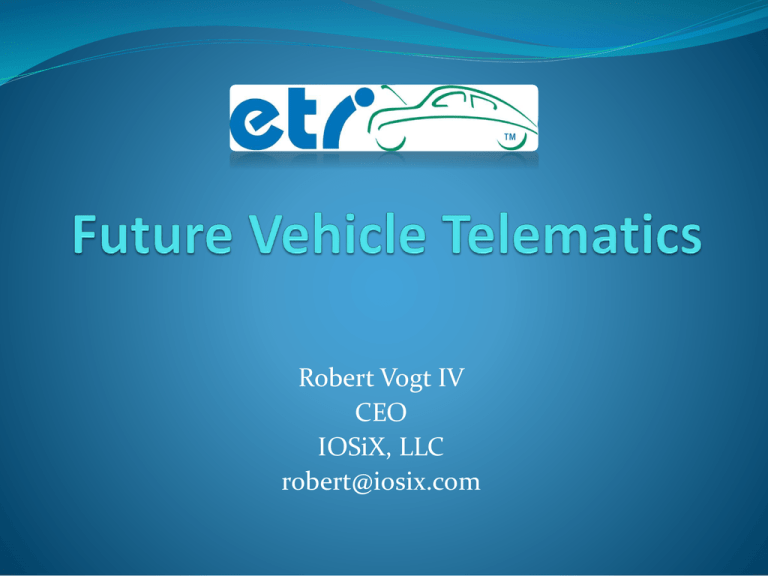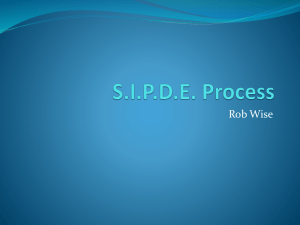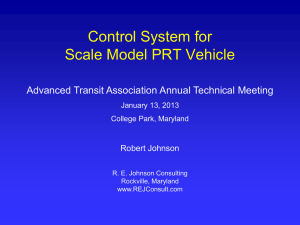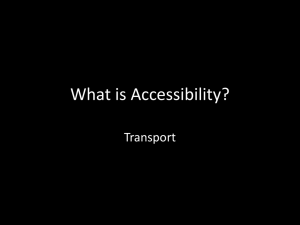Future Vehicle Telematics
advertisement

Robert Vogt IV CEO IOSiX, LLC robert@iosix.com IOSiX, LLC ● ● ● ● ● Formed in 2005 ● Focused on compact, costeffective dataloggers, vehicle interfaces, and custom devices Extensive hardware/software platform Quick turn-around IP leveraging Full automotive engineering capabilities to the vehicle subsystem level Extensive protocol suite – SAE J1850 PWM/VPW – ISO 9141-2/KWP – ISO 15765-4 – SAE J1939 & J1708 ● WiFi/Bluetooth/Zigbee/900MHz ● GSM/CDMA/Satellite ● GPS/RTK-GPS ● DC/DC power conversion & control, Lithium battery IP ● USB, microSD, FAT16/32 ● Video/Audio capture & encoding Current Method ● 1 x J1962 connector ● 16 pins ● Vehicle interface hardware for every application Upsides/Downsides ● Inexpensive to implement (<$7 @ 1M) ● Backward compatibility to 1996 ● Hundreds of devices on the market in thousands of applications ● Too many buses to put on J1962 connector – 5+ CAN at various speeds – 5+ ISO-K – J1850 PWM/VPW, SCI, BEAN, single-wire CAN ● Conflicts between different OEM functions on same pin ● Potential for poor equipment to interfere with vehicle operation ● Inconsistent vehicle state ● Minimal security Pin Conflicts Orange = signal conflict between vehicles Concept ● Vehicle network gateway connecting to all busses ● A variety of devices can access the vehicle ● ● ● Consistent vehicle state data, especially for power control Provide the same capability as the previous direct data bus access for diagnostics applications Ensure vehicle network stability Requirements ● Interface to multiple devices simultaneously ● Security access levels – Basic read-only data – Full bus access ● Prevent interference between devices ● Cost minimized to OEMs and tool manufacturers ● Implementation should be straightforward Implementation USB Ethernet Ubiquitous Inexpensive High speed Low latency Requires one interface per port, not easily expandable Depending upon USB profile, can be used with inexpensive microcontrollers Power via USB, non-standard in this manner, maximum 5W Ubiquitous Inexpensive High speed Low latency on local network Easily expansion using Ethernet hubs and switches Can be used with inexpensive microcontrollers at lowered data rates Power-over-Ethernet, maximum 25W Benefits to Vehicle Manufacturers ● ● ● ● ● Can use generic, low-cost radio hardware for OEM telematics No expectation to provide an ‘app’ ecosystem or data connectivity to 3rd party functions Equipment conflicts eliminated Flashing and diagnostics all can be done with a standard computer if needed Dealership can hook vehicle to diagnostics system easily via WiFi dongle Vehicle Manufacturer Costs Depending on vehicle bus configuration, a high volume solution can be reached in the sub-$20 range: $3 – Processor $2 – Ethernet transceiver $4 – 100 mbps Ethernet switch (4 ports) $4 – Vehicle bus transceivers $4 – Connectors $2 – Casing, Power, etc. Benefits to ETI Members Consistent access to vehicle systems Opportunity to supply vehicle gateways to OEMs Could bring an era of better software-only scantools BOM reduction for both low- and high-end devices Relaxed device packaging constraints as expansion ports can be located in remote vehicle areas (trunk?) Tool Manufacturer Costs -$4 transceivers -$3 cables and connectors +$2 Ethernet transceiver +$0.50 processor with Ethernet support (SPI?) Net savings of $4.50+ in high volumes Technical Details ● 4 Ethernet ports ● One preferably located near the driver’s seat ● Remainder located near rear of vehicle ● ● Basic API would cover vehicle speed, emissions data, odometer, brake switch, accelerometer data, fuel consumption, etc. Advanced API would provide encapsulated access to the vehicle data busses. Requests could be throttled as-needed to prevent interference with critical vehicle comms. More Future Vehicles ● ● ● Would have Ethernet already Could be directly connected to diagnostic ports as long as access APIs are preserved Solid upgrade path Backwards Compatibility There will be a need for existing vehicles to be retrofit with a small Vehicle Network Gateway to work with newer equipment. This could be one-size-fits-all or a different part by vehicle manufacturer and legacy data bus. There would be a strong opportunity for ETI members to supply these aftermarket components. Questions?








